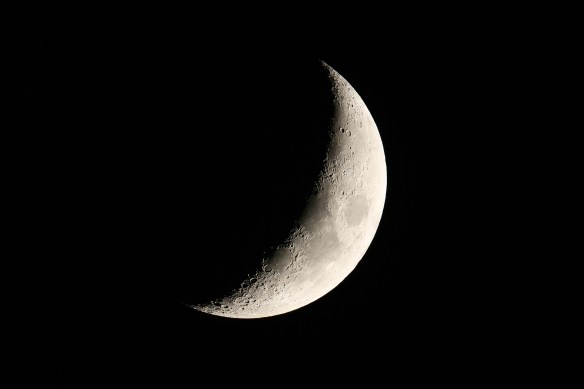
[Image found here.]
It is no secret than I am not a fan of our current president, Donald Trump. I’ve been watching him carefully, and have found exactly one point of agreement with the man: humans should colonize the planet Mars. The two of us differ, however, on the details. What follows is my set of reasons — not Trump’s — for supporting colonization of Mars.
First, we should not start with Mars. We should start, instead, by establishing a colony on Luna, our own planet’s moon. There are several reasons for this. First, as seen in this iconic 1969 photograph brought to us by NASA, we’ve been to the Moon before; it simply makes sense to start space-colonization efforts there.

At its furthest distance, the Moon is ~405,000 km away from Earth’s center, according to NASA. By contrast, at its closest approach to Earth in recent history, Mars was 55,758,006 km away from Earth. With the Moon less than 1% as far away as Mars at closest approach, Luna is the first logical place for an extraterrestrial colony. It need not be a large colony, but should at least be the size of a small town on Earth — say, 100 people or so. There are almost certainly problems we haven’t even discovered — yet — about establishing a sustainable reduced-gravity environment for human habitation; we already know about some of them, such as muscular atrophy and weakening of bones. Creating a lunar colony would demand of us that we solve these problems, before the much more challenging task of establishing a martian colony. (To find out more about such health hazards, this is a good place to start.) Once we have a few dozen people living on the Moon, we could then begin working in earnest on a martian colony, with better chances for success because of what we learned while colonizing the Moon.
An excellent reason to spend the billions of dollars it would take to colonize Mars (after the Moon) is that it is one of the best investment opportunities of the 21st Century. Space exploration has a fantastic record of sparking the development of new technologies that can help people anywhere. For example, the personal computers we take for granted today would not be nearly as advanced as they are without the enormous amount of computer research which was part of the “space race” of the 1960s. The same thing can be said for your cell phone, and numerous other inventions and discoveries. Even without a major space-colonization effort underway, we already enjoy numerous health benefits as a result of the limited exploration of space we have already undertaken. Space exploration has an excellent track record for paying off, big, in the long run.
Another reason for us to colonize Mars (after the Moon, of course) is geopolitical. The most amazing thing about the 20th Century’s Cold War is that anyone survived it. Had the United States and the Soviet Union simply decided to “nuke it out,” no one would be alive to read this, nor would I be alive to write it. We (on both sides) survived only because the USA and the USSR found alternatives to direct warfare: proxy wars (such as the one in Vietnam), chess tournaments, the Olympics, and the space race. In today’s world, we need safe ways to work out our international disagreements, just as we did then. International competition to colonize space — a new, international “space race” — would be the perfect solution to many of today’s geopolitical problems, particular if it morphs, over the years, into the sort of international cooperation which gave us the International Space Station.
Finally, there is the best reason to establish space colonies, and that is to increase the longevity of our species, as well as other forms of life on Earth. Right now, all our “eggs” are in one “basket,” at the bottom of Earth’s gravity well, which is the deepest one in the solar system, of all bodies with a visible solid surface to stand on. A 10-kilometer-wide asteroid ended the age of the dinosaurs 65 million years ago, and there will be more asteroid impacts in the future — we just don’t know when. We do know, however, that past and present human activity is causing significant environmental damage here, so we may not even need the “help” of an asteroid to wipe ourselves out. The point is, the Earth has problems. The Moon also has problems, as does the planet Mars — the two places are far from being paradises — but if people, along with our crops and animals, are located on Earth, the Moon, and Mars, we have “insurance” against a global disaster, in the form of interplanetary diversification. This would allow us to potentially repopulate the Earth, after the smoke clears, if Earth did suffer something like a major asteroid impact.
Since Moon landings ended in the 1970s, we’ve made many significant discoveries with space probes and telescopes. It’s time to start following them with manned missions, once again, that go far beyond low-Earth orbit. There’s a whole universe out there; the Moon and Mars could be our first “baby steps” to becoming a true spacefaring species.
[Later edit: Please see the first comment, below, for more material of interest added by one of my readers.]




